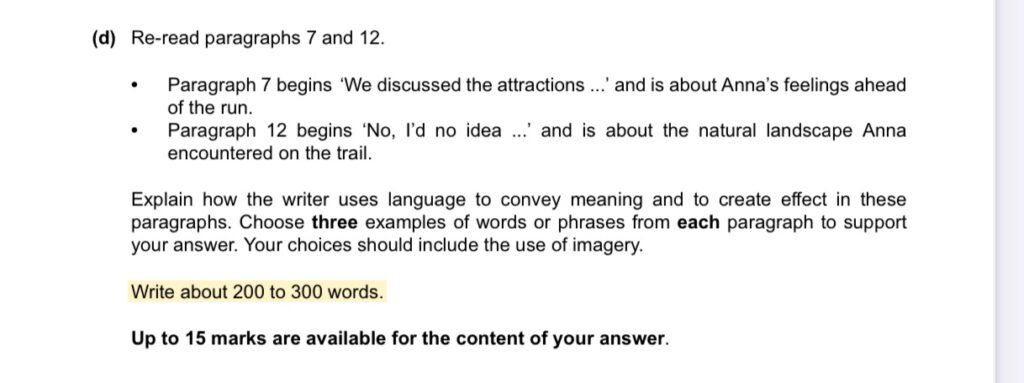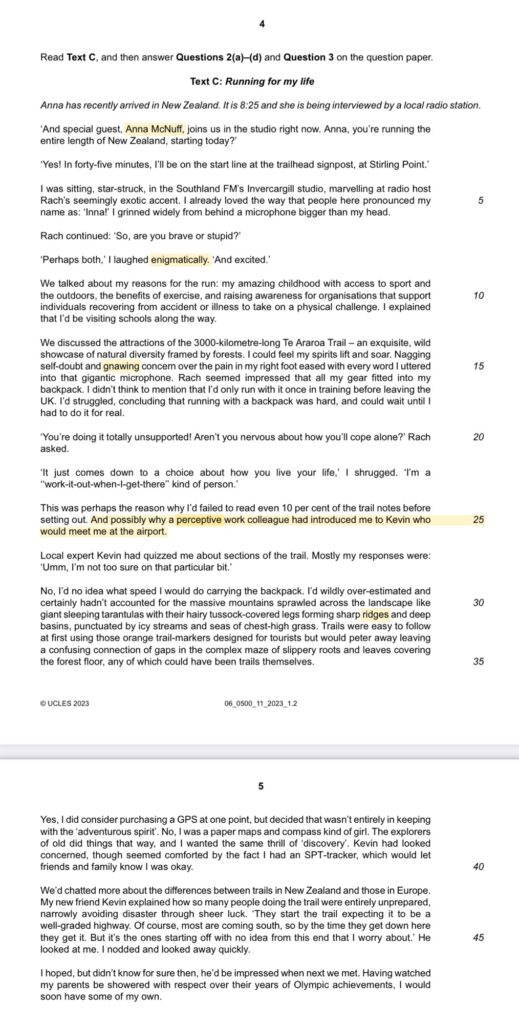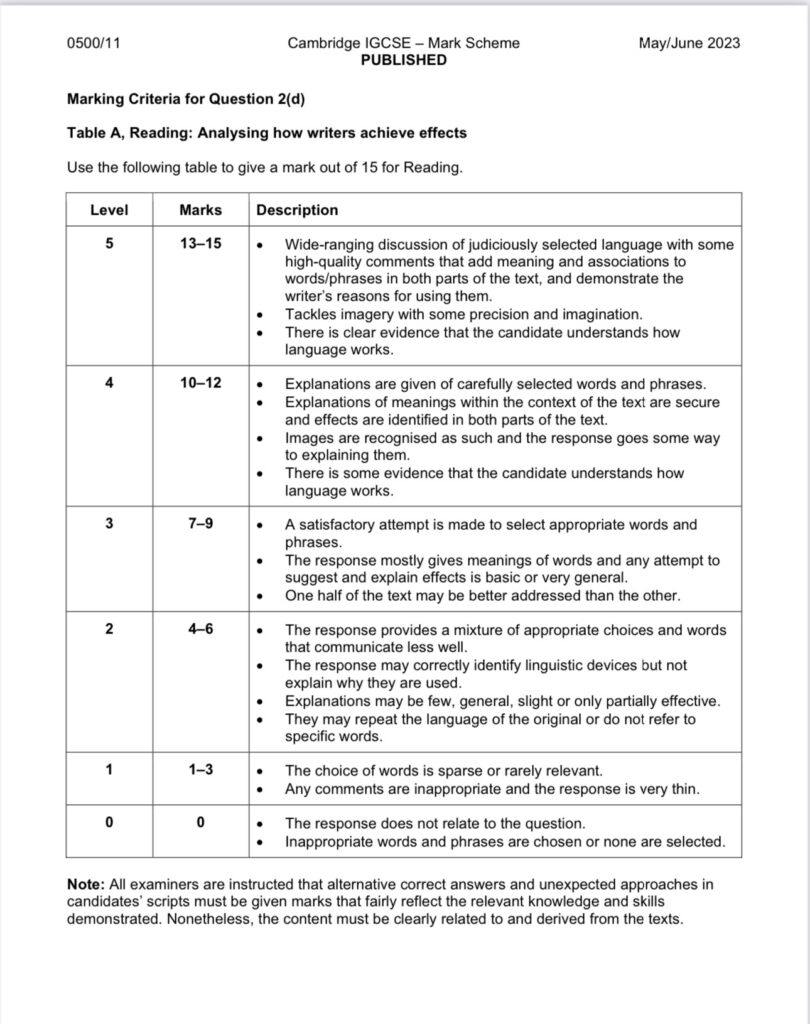As you know from reading this site, I place a huge importance on understanding marking criteria for all of my students, meaning all of you, and also the students who participate in my live classes.
But I care not because it’s something arbitrary; I care because Cambridge cares, and therefore so should you if you care about achieving an A* in the IGCSE First Language English examination.
With that in mind, today’s post will delve into one of the stickiest of all IGCSE First Language English questions, the writer’s effect question.
As you learned from some of the previous posts, writer’s effect is the most hated question of the entirety of EFL – it is always question 2D of paper 1, and it involves looking at text C of the insert and then answering a question based on two of the paragraphs by identifying three words or phrases in the text and justifying the overall effect that the writer aimed to create by explaining how these words or phrases are used.
Its objective is to help students assess students’ ability to analyze language and to comment on it in an intelligent way, thereby demonstrating that they understand how the word choices of a writer influences the effect upon a reader, and showcasing that they can read and appreciate the aforementioned effects, while at the same time justifying that they are what they are to an external reader.
Here’s a sample question.

Here’s the text you must read and reference to answer the question…

…And here’s the mark scheme for that question.

To achieve the maximum scores under the provided Cambridge IGCSE criteria for analyzing how writers achieve effects, students should aim for a comprehensive and nuanced response that demonstrates a deep understanding of the text.
This is often very difficult for students, especially if they don’t have an appreciation for how language isn’t a perfect measure of reality, but can be used in specific ways in order to create effects. Which is kind of a level of understanding over and above just one in which they write essays and craft plausible images. It requires an understanding of language, and how to reason carefully with it.
Now, here’s how to excel in each of the key areas outlined in the Level 5 criteria:
- Wide-Ranging Discussion: Analyze a broad range of language features from the text. Don’t just pick out random words or phrases; choose them judiciously, ensuring they are significant to the writer’s overall purpose and themes.
- High-Quality Comments: Your comments should add meaning and insight into the text. Go beyond stating what the text says; explore why the author chose certain words or phrases, what associations they bring, and how they contribute to the larger message or tone of the text.
- Tackling Imagery: Discuss the imagery with precision, which means not just identifying figures of speech but also exploring their connotations and how they contribute to the reader’s understanding and emotional response. Use your imagination to interpret imagery in a way that aligns with the text’s themes.
- Clear Evidence of Understanding Language: Show that you understand the mechanics of the language by explaining how specific language features like syntax, diction, and tone work to create a particular effect on the reader.
To distinguish a high-quality response from a lower-quality one, students should:
- Avoid simple, literal explanations of the text. High-quality responses interpret the language in a way that shows an understanding of its deeper, more subtle effects.
- Provide specific examples from the text to support every point made. General statements without textual evidence will not score highly.
- Ensure that the analysis covers the text as a whole. Don’t focus too heavily on one section at the expense of others.
- Be precise in the use of terminology. Know the difference between metaphor and simile, or alliteration and assonance, and apply these terms correctly.
- Justify the effects identified by linking them back to the reader’s experience and the text’s themes. Explain why these effects are significant in the context of the text.
In essence, high-quality responses are characterized by their depth of analysis, the relevance and specificity of their examples, the sophistication of their commentary, and the ability to tie individual language features to the reader’s overall experience of the text.
These responses reflect a holistic understanding of the text and an ability to communicate this understanding effectively.
So yeah, that’s it. You know how the criteria work and why they are important, and you’ve seen them translated into actual advice.
I’m not saying that any of this will come naturally. Likely, it will come only after you’ve taken some time to reflect about the nature of language, to think critically about the words that you are reading, and to consider their effect upon you yourself, and also will involve your thinking about how what you personally say or write in any interaction will influence how others in turn will react.
That, and you can also purchase our handy Writer’s Effect sample responses here if you’d like to have a clear understanding of how to do well in that section of the paper by looking at some good examples.
In any case, none of these will be useful without practice, which itself will give you the gift of understanding. So, work hard, ~slay~ hard in the exam hall, and I can’t wait to watch you guys succeed!
